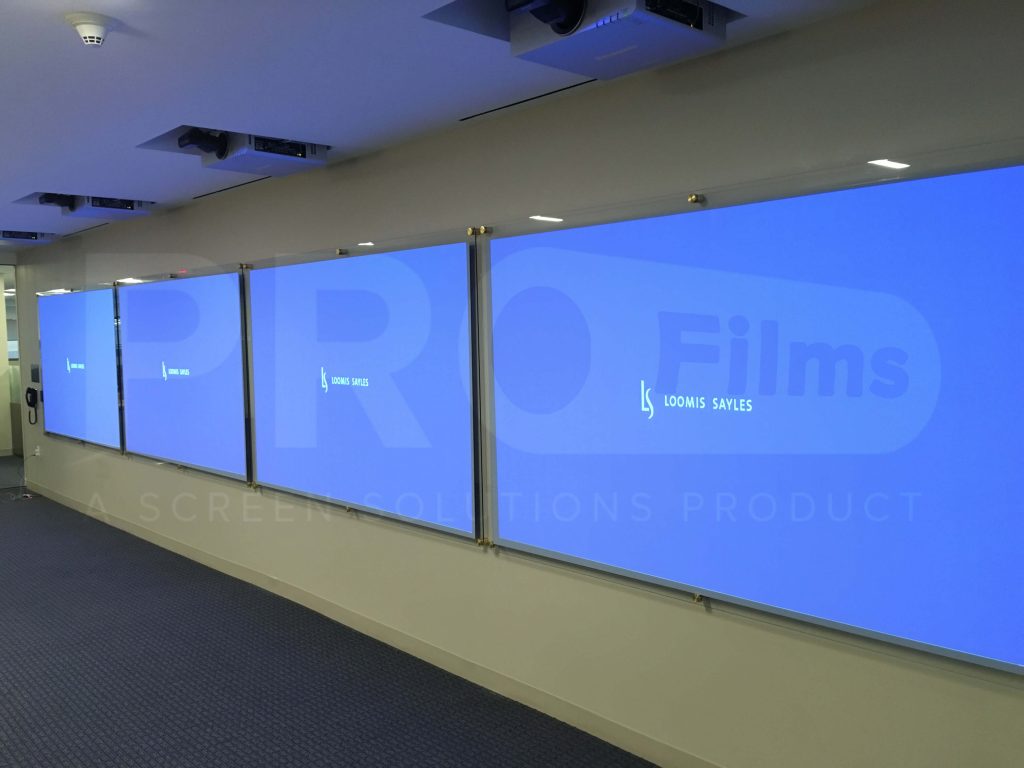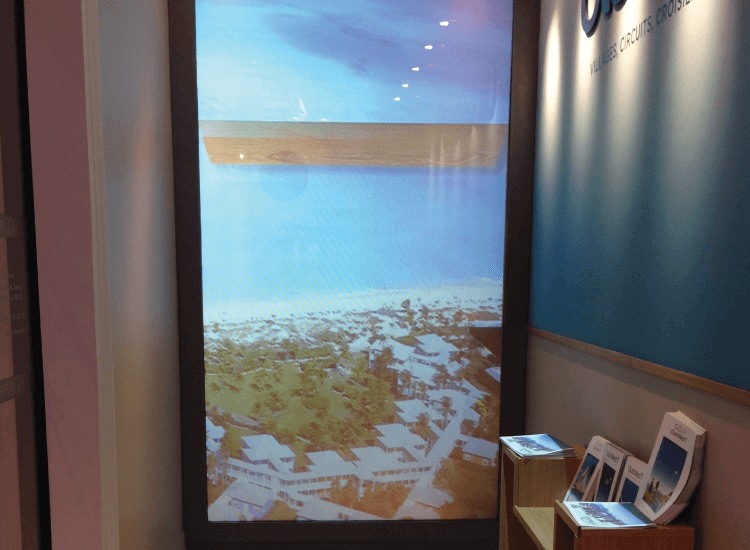How to Choose a Motorized Glass Projection Screen Film? (Self-Adhesive projection film)
Comparison of the Best Motorized Projection Screens

How to choose a Motorized Projection screen?
Got a new projector? An accessory that will necessarily come as a duo with your equipment will be the projection screen. In that sense, you have a whole variety of glass projection screen film available:
- scrolling screens
- portable screens
- motorized screens
This last type of projection screen to accompany your projector represents the majority of projection screens used. And that’s certainly because this kind of screen is quite specific and has countless advantages.
In addition to being practical and ensuring top quality projection, a motorized screen will form a perfect duo with your projector.
When a simple white sheet no longer does the job, and you want a very good visual rendering, the motorized projection screen would be the ideal choice. A screen will guarantee you an experience like a real cinema. Each pixel will be explored well to guarantee you a high definition projection quality.
So let’s review the different points that you must take into account to choose your motorized screen.
What is the ideal shape for the motorized glass projection screen film?
A motorized glass projection screen film comes in different shapes and sizes. But of course, we will never move away from the traditional rectangle or square.
The format of a motorized screen
We all know that a screen for home use will never be identical to another for use in public, in a movie theater for example. Currently, we can essentially distinguish formats of 1.77: 1, 1.85: 1, 2.35: 1, 2.40: 1, it all depends on your condition and need for use.
For example, if you are watching TV, or playing a video game using your projection screen, a 1.77: 1 type screen might be sufficient. Whereas if you want a real cinematic experience, a wider 2.40: 1 model would be recommended. This will give you a bigger picture possible.

The white area of a motorized screen
A motorized glass projection screen film may have white areas or black bars. Areas which, in some models, will be hidden to ensure better video rendering, and less disturbing the eyes. You could then choose either for one or the other.
Handling the motorized glass projection screen film?
A motorized projection screen is a model that we can move up and down as we please. Unlike fixed projection screens, which stay in place on a corner of the house, the motorized model gives you much more freedom of movement. You can even view your videos and images in different rooms of the house. But to make sure that you are buying the right accessory, make sure that the handling really meets your needs and expectations.
In principle, you have several types of handling possible with a motorized projection screen:
Manual handling
This is a process in which you will need to stand up in order to adjust your screen. A very economical option, which still allows you to take advantage of the advantages of a motorized screen (adjustable and easy to move). However, having to leave the comfort of your sofa or bed all the time to lower the screen is ultimately not very practical.
Handling glass projection screen film with a wall switch
Glass projection screen film presents this time a wall switch on which you will have to press in order to manage your screen remotely. This is a more convenient option than the manual, especially if the switch is placed next to you.
Handling with remote control
This is an option that really makes life easier for the user. With a remote control with a large range, you can manage your screen from a distance. You just have to be careful not to lose your remote control.
The low voltage release
Very practical for several screen manipulations, it is capable of lowering the screen when the projector turns on and raising it when it turns off. Motorized glass projection screen film available in the market is generally reliable models. But the only catch is that they need a cable to connect the projector to the screen. A wired connection which could be inconvenient for the movement.
Infrared management of glass projection screen film
It’s a cheap option, but still practical, a motorized infrared projection screen simplifies your life during your projections. This management mode adapts to any other control system.
What would be the right size for the motorized glass projection screen film?
While the most popular screen sizes are between 100 to 120 inches, these measurements may not be the ones that can guarantee a successful cinema experience in your home.
Some parameters will then have to be taken into account, such as the surface of your wall and the viewing distance between the screen and the projector:
Wall size
So much the better if you have a very large wall surface, you can afford any motorized glass projection screen film. But the problem arises when you will only have a small part between two windows to place your screen. Then take measurements from top to bottom, and from left to right so as not to exceed the slightest centimeter.
Viewing distance
It would be a bad idea to want to invest in a large projection screen when you only have a small room to do the projections. The cinema experience will be all the more uncomfortable. You must then take into account the distance that will eventually separate the screen from the projector. We will speak at this time of the retreat distance.
Usually, a small screen can suffice if you don’t have a large room. In fact, the retreat distance will be less important at that time.
Don’t overlook the side installing a motorized glass projection screen film?
However, installing a motorized glass projection screen film is far from child’s play. It will already have the hands of handymen. It will be necessary to fix the support on a high surface, then to check the quality of fixing by supplying the electric motor. To do this, you can only activate the trigger input so that the screen automatically lowers when you turn on your projector. This requires in particular a low voltage connection between the projector and the screen.
How does holographic glass projection screen film work?
Solutions with rear projection are generally adopted, i.e. the light beam is projected from behind with respect to the correct direction of vision. The films can be applied to a glass or plastic surface. Rear projection is mainly used on shop window films.
It can also be projected onto glass with a front projector, as happens in conferences and schools.
The rear glass projection screen film allows images to be projected on glass, effectively making shop windows into real holographic showcases.
There are several on the market but they usually satisfy these main purposes:
- Films for indoor environments
- High brightness environment films
- Film for touchscreen digital whiteboards
Holographic glass projection screen film maintains image quality even in daylight and in full sunlight, making them ideal for shop windows or agencies. Just like monitors, they allow wide viewing angles and can cover surfaces as large as 100 ″. They can also be semi-transparent. So from the inside you can see beyond the film, and they are anti-reflective.
So you have a sharp image and perfect colors. The prices of the holographic films are really interesting and competitive, as well as the installation of the films in the window.
For indoor solutions it is possible to create a custom panel where to apply the film. And simply install it with cables to the ceiling. You can also decide to use permanent or removable films.








